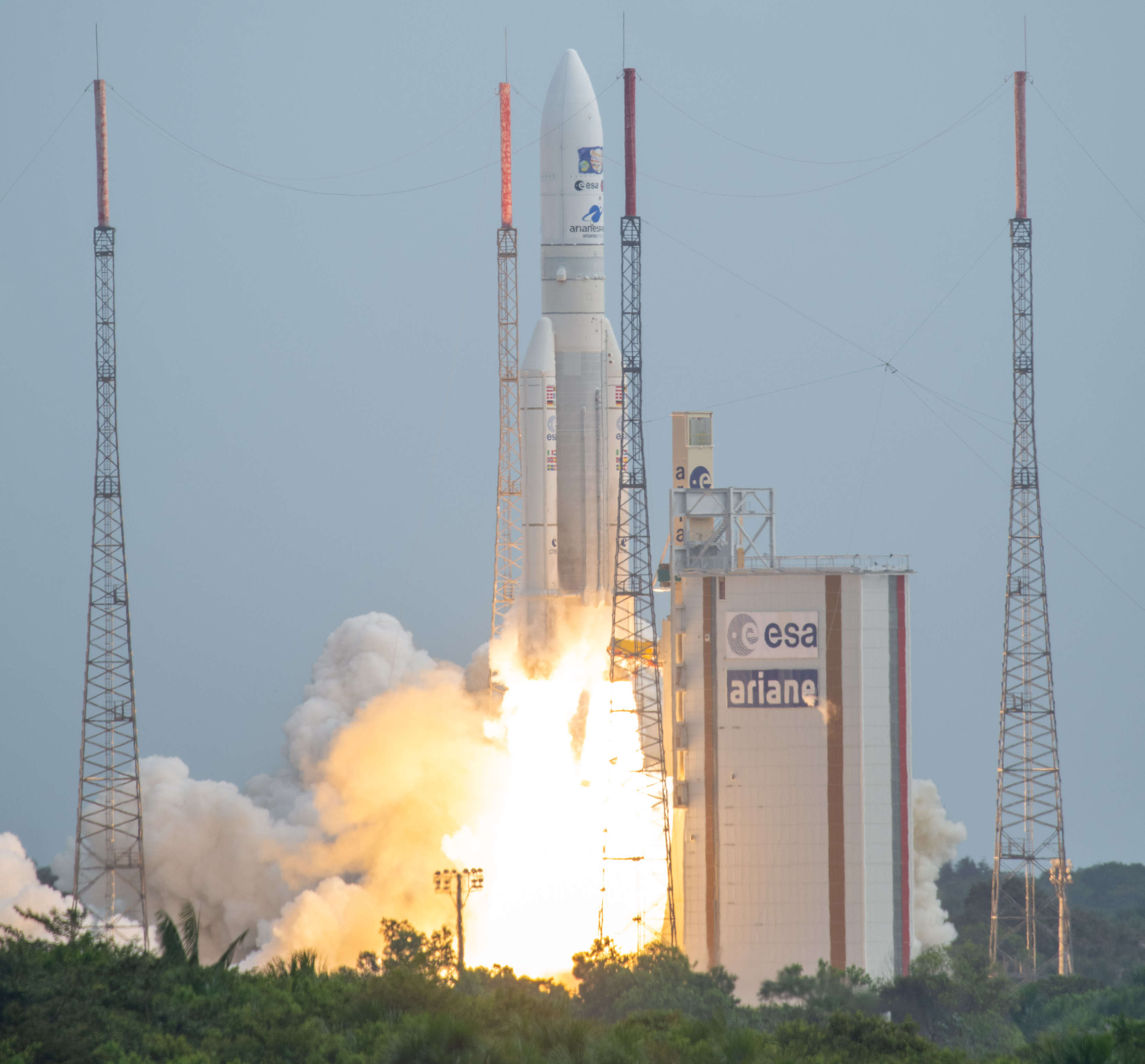
A physicist from Lancaster University has helped to develop technology on board a spacecraft heading to the planet Jupiter.
Dr Chris Arridge has helped to develop instrumentation on the European Space Agency (ESA)’s Ariane 5 spacecraft which launched from its spaceport in French Guiana.
The JUICE (Jupiter Icy Moon Explorer) mission will investigate the planet's main icy satellites Europa, Ganymede and Callisto as potential habitable bodies and in particular seek to understand their interiors and how they couple to the surface.
It blasted off on April 14 on an eight-year journey to reach the icy moons of the planet, after being delayed for a day due to bad weather.

Dr Arridge is Reader in Planetary Physics at Lancaster University where he is a co-investigator on the JUICE magnetometer instrument 'J-MAG' led by Imperial College London.
He said: “The spacecraft will take about eight years to reach Jupiter, but we will be doing science along the way.
"Once JUICE reaches Jupiter it will orbit the planet, doing quick flybys of the icy satellites, before going into orbit around Ganymede itself. It will end its mission with a controlled crash on the surface.”
JUICE will also explore Jupiter as an “archetype” for gas giant planetary systems – what can Jupiter and its planetary system tell us about gas giants in general, either in our solar system or further afield.
J-MAG will measure magnetic fields around Jupiter and around Europa, Ganymede and Callisto.
These measurements are important because, amongst other information, they yield information about salty liquid oceans underneath the icy crusts of the satellites.
When these changing magnetic fields reach these icy worlds, they are modified by what they encounter inside – like a salt water ocean which is electrically conducting.
“By measuring how these changing magnetic fields are affected by the moons we can work out what is inside them," said Dr Arridge.
"How thick the oceans are, how deep they are under the icy surface and how salty they are, for example.”
Ganymede - the largest moon in the solar system - is the main focus of the mission.
“Ganymede is the only moon in the solar system known to have its own magnetic field like that of the Earth," he said.
"You could use a compass on Ganymede, just like you can on Earth.
"JUICE and J-MAG will also study this magnetic field and the consequences of Ganymede having its own magnetic field. For example, there are northern lights on Ganymede and JUICE and J-MAG will look at how these are produced.”
J-MAG is located on a 10.6m arm that keeps the instrument far away from any sources of magnetic fields on the spacecraft that would otherwise contaminate the data.


 ITV commissions sixth series of Morecambe crime drama The Bay
ITV commissions sixth series of Morecambe crime drama The Bay
 E-bike shop moves from Lancaster to new Carnforth showroom
E-bike shop moves from Lancaster to new Carnforth showroom
 Lancaster workshop to tackle the issue of drink and needle spiking
Lancaster workshop to tackle the issue of drink and needle spiking
 Morecambe raw feeds shop up for three 'Animal Star' awards
Morecambe raw feeds shop up for three 'Animal Star' awards
 Two new festivals proposed for Morecambe entertainment venue the Platform
Two new festivals proposed for Morecambe entertainment venue the Platform
 Second day of disruption as work continues after train derails in Cumbria
Second day of disruption as work continues after train derails in Cumbria
 Morecambe lifeboat crew’s swift response rescues swimmer ‘being swept dangerously out to sea’
Morecambe lifeboat crew’s swift response rescues swimmer ‘being swept dangerously out to sea’
 'Street Meets' announced to answer your questions amid new wheelie bin roll-out
'Street Meets' announced to answer your questions amid new wheelie bin roll-out
 Campaign group welcomes new "life changing" bus service to Morecambe
Campaign group welcomes new "life changing" bus service to Morecambe
 Lancaster prison worker jailed for drug offences
Lancaster prison worker jailed for drug offences
 Major disruption as train derails on West Coast Main Line
Major disruption as train derails on West Coast Main Line
 Talks begin for events to mark Eric Morecambe's 100th birthday
Talks begin for events to mark Eric Morecambe's 100th birthday
 Lancaster music venue due to shut will now stay open "well into 2026"
Lancaster music venue due to shut will now stay open "well into 2026"
 Halloween What's On Guide
Halloween What's On Guide
 LISTEN: Launch of new group in Morecambe to help with gambling addiction
LISTEN: Launch of new group in Morecambe to help with gambling addiction
 LISTEN: New centre for people with disabilities to open in historic Lancaster location
LISTEN: New centre for people with disabilities to open in historic Lancaster location
 Mayor of Lancaster launches children's Christmas card competition
Mayor of Lancaster launches children's Christmas card competition
 Councillor loses her seat for not attending meetings for six months
Councillor loses her seat for not attending meetings for six months
 Firefighters attend two call-outs for vehicle fires in Lancaster area
Firefighters attend two call-outs for vehicle fires in Lancaster area
 Lancaster youth charity announces new CEO
Lancaster youth charity announces new CEO








